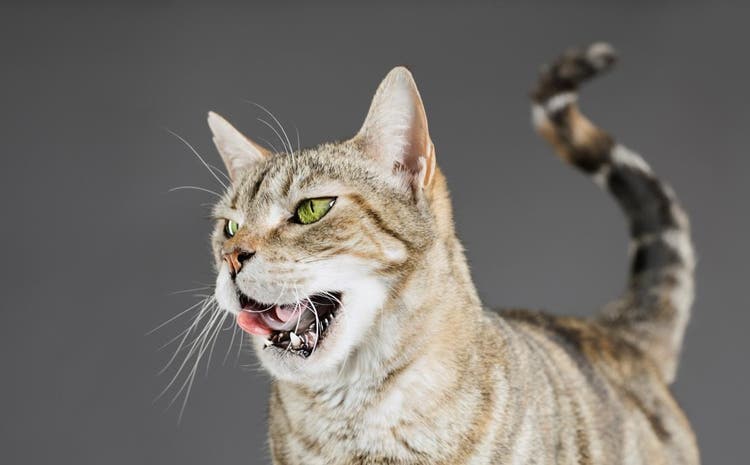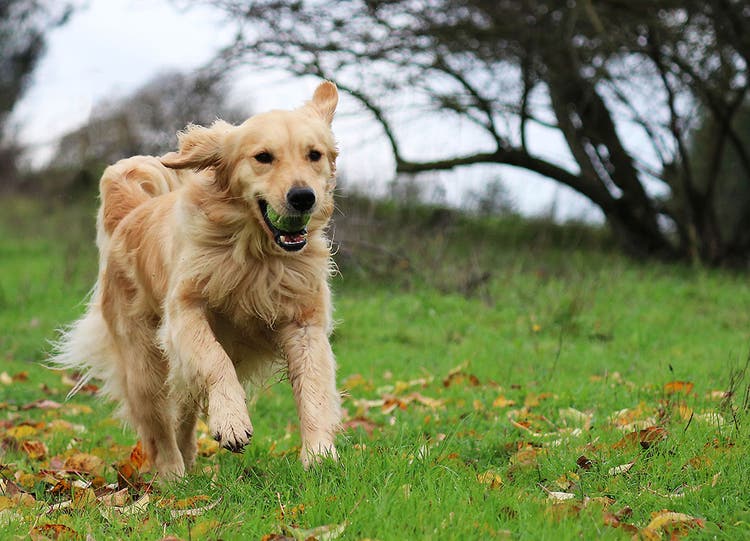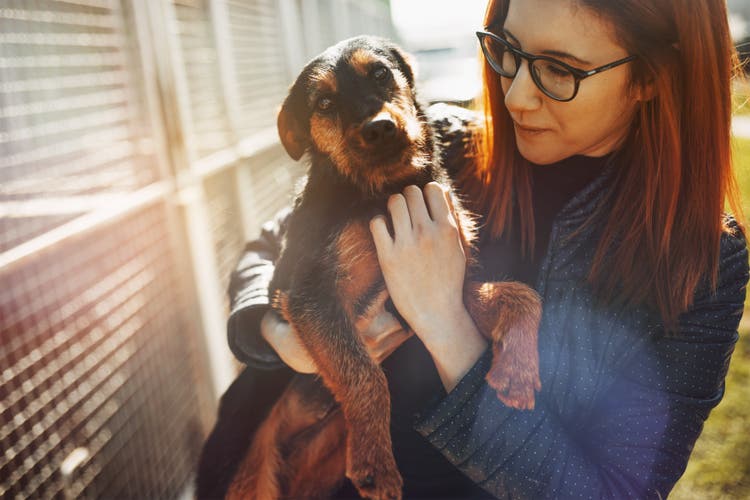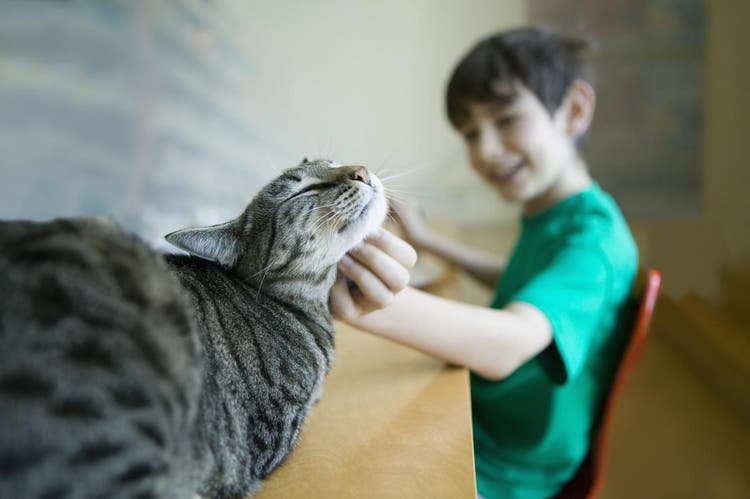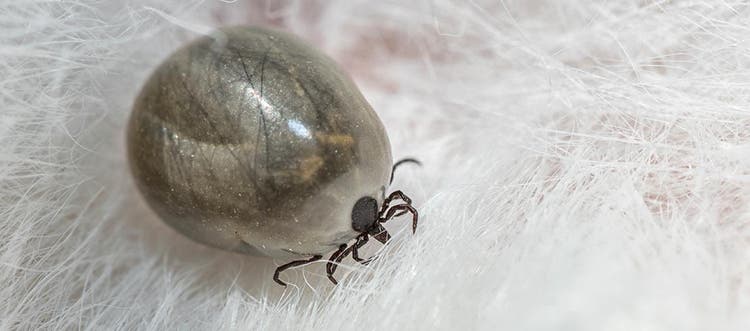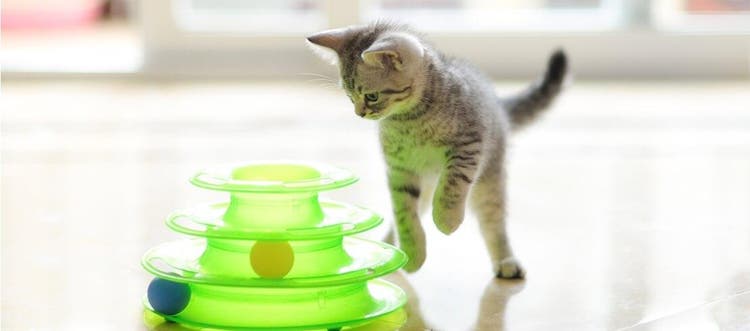Thinking of getting your first dog? Congratulations! All dogs have unique characteristics and personalities, but each breed has their own distinct traits, training considerations and grooming needs. Some breeds require more effort and experience, while others are better suited to first-time owners. There are so many wonderful dog breeds to choose from, it’s difficult to narrow it down. To help you begin your search, we’ve highlighted seven of the best breeds for new owners.
Small breeds
Certain small breeds may be easier for first-time dog owners.
1. Papillon
Papillons are a loyal, affectionate breed that adapts easily to the lives of their owners. Under 5 kg and less than 30 cm high, they’re small enough to live in an apartment. You don’t need a backyard either, since once they’re adults the Papillon only needs about 20-30 minutes of exercise per day.
Though they have long, silky hair, Papillons require little grooming because they don’t have an undercoat. Between grooming appointments, most Papillons only require a once-weekly brushing.
Papillons are great for first-time owners because they’re extremely intelligent and, therefore, relatively easy to train. Training, however, must begin right away. Take a gentle yet firm approach and set firm boundaries. Papillons need to know their place in the ‘pack’ hierarchy or they may become dominant and assume the role of top dog. These dogs are also prone to yapping, which can be a problem for neighbours if you live in an apartment. Barking can be addressed through training from an early age.
2. Miniature Dachshund
What Miniature Dachshunds lack in height – most are under 20 cm tall – they make up for in personality. They are intelligent, fun-loving and feisty dogs that are confident around people and keen to be involved with everything that’s going on. As younger dogs they are very energetic and will need at least 30-60 minutes of exercise a day.
Given sufficient outlet for their energy, Miniature Dachshunds make cheerful, loving companions. They are a breed, however, that hates to be alone or bored. If left alone too long, Miniature Dachshunds can channel their excessive energy into destructive behaviours like chewing shoes or furniture – both can be a sign of stress. As such, this is not a breed for people who will be off working all week. On the other hand, if you have a lot of time and space in your life, then the Miniature Dachshund could be the ideal first-time dog for you.
Note: Dachshunds of all sizes are prone to back problems and disc herniation as they age, which could lead to ongoing back pain and even paralysis. Discuss the pros and cons of owning a Dachshund with your veterinarian before making your decision.
3. Bichon Frise
These petite dogs weigh under 5 kg, have wonderfully playful, confident dispositions and always want to take center stage. Unlike many small dogs, they get along well with children, which makes them an excellent first-time dog for families. Bichons are also highly intelligent, which makes training relatively easy, and they are easy-going enough to adapt to all environments, whether it’s a busy family home or a small city apartment.
Bichons are moderately active, so it is best for them to get at least 20-30 minutes of exercise a day.
Like many dog breeds, Bichons find being alone stressful. This is a breed that bonds closely with their owners and tends to suffer acutely from separation anxiety. As such, they are best suited to households where one person is always at home. Bichons are also quite high maintenance when it comes to grooming. To keep them looking like a fluffy powder puff they will need to visit a groomer at least every six weeks, which can add significantly to the cost of keeping them.
Medium-to-Large breeds
Larger dogs can also be great for first-time owners, although when they’re younger they need more exercise and they definitely require more food! The food can significantly add to the cost of keeping a dog, so this should not be neglected when picking the right breed for your family. They are, however, the best breeds to keep you in shape and on the go, because these active dogs need regular walks. Here are some of the best medium-to-large breeds for first-time owners.
4. Golden Retriever
Golden Retrievers are hugely popular with first-time owners, and it’s easy to see why. Gentle, playful and kind, the soft-natured personalities of Goldens make them safe and reliable companions. Intelligent, very eager to please and forgiving, Goldens are easy to train and wonderful with children and other pets. Thanks to their docile, patient and calm nature, Golden Retrievers are often trained to be therapy dogs who visit seniors and hospitals.
Originally bred as sporting dogs, Golden Retrievers are an active breed that require a lot of exercise – up to two hours a day. All that time running around outside means their long silky coats also require a lot of brushing and grooming to keep their feathered tails and legs in tip-top condition. They are also a ball of energy when they’re pups and are definitely like adding another child to the household!
While Goldens retain their playfulness well into adulthood, they can suffer from health problems as they age, including vision, joint and dental issues, which can be costly.
5. Labrador Retriever
Along with the Golden Retriever, the Labrador Retriever is one of the top dogs for first-time owners. Ideal family dogs, their gentle, fun-loving personalities make them perfect playmates for children and adults alike. Highly intelligent and very eager to please, Labs live for treats and love to learn, which makes training easy, even for inexperienced owners.
Labs are very high-energy dogs and need a lot of exercise (at least 2 hours a day) and lots of mental stimulation. No breed enjoys chasing and retrieving a ball as much as a Lab! Care must be taken not to overexert them in hot weather, however, because Labs will not recognize their limit. Labs also have a high food drive, and obesity is a common problem for this breed, particularly later in life.
Labs fall into two categories: American Labs and British or English Labs, although the difference between the two is not officially recognized. American Labs have a taller, slimmer and more athletic build, whereas the English or British Labs are shorter and stockier and tend to put on weight faster. Regardless of the type, all Labs are best suited to homes with backyards and active households.
Labradors don’t require much grooming, but they do shed. A good brushing once a week can help with this.
6. Standard Poodle
Poodles are one of the most intelligent dog breeds and are skilled at learning new tricks and commands quickly. There is a reason they were known as circus dogs! Playful, loyal and loving, Poodles are a good choice for first-time owners.
Poodles are an extremely high-energy breed, so they can quickly get bored without a lot of stimulation and exercise. Most Poodles need at least three walks a day. If they don’t get sufficient stimulation and playtime, Poodles can become bored, anxious and unhappy. A breed that can be high-strung, Poodles are best suited to active households where they will receive the time and attention they naturally crave. This is a breed that love being in the spotlight.
Even though they do not shed, Poodles’ coats also need a lot of care to prevent matting. Regular trips to a professional groomer are an absolute must and most Poodle owners have their dog’s hair clipped– some quite elaborately!
Poodles can be a handful when they’re pups, due to their extremely high energy. Very springy and athletic dogs, bored Poodle puppies can literally be bouncing off the walls! Some Poodle owners put their pups in “doggy daycares” once they are old enough to have all their required vaccines.
Doggy daycares are a great resource for all new puppy owners. Like daycares for children, you can drop your pup off in the morning and pick them up in the evening. Your pup gets to play with other dogs all day, which allows them to drain their energy and learn crucial socialization skills. And you’ll be able to take a needed day off from puppy duties and pick up a very happy and tired pooch at the end of the day! Note: most doggy daycares require proof of vaccination. Some will not allow unneutered or unspayed dogs over 6-months old.
7. Greyhound
Greyhounds are gentle, loving and surprisingly laid-back dogs that make great first-time pets for owners. In Canada, many racing Greyhounds are rehomed upon retirement through reputable adoption organizations. Most of these retired Greyhounds are already house-trained and make ideal pets.
Greyhounds are showstoppers, with their sleek, athletic and elegant physique. Not surprisingly, these dogs are built to run and require a couple of walks a day. Sighthounds, Greyhounds are bred to chase down small animals. As such, extreme care is needed when walking Greyhounds because of their strong prey drive. Greyhounds should never be let off leash in an unenclosed environment. They could easily get lost while in pursuit or injured if they run too fast on uneven ground. It’s important to consistently work on recall with Greyhounds, but even the best training may not overcome their instinct to chase and run.
Greyhounds are intelligent dogs that learn quickly when trained with patience and kindness. They are, however, sensitive and easily scared. They are not the right fit for rough-and-tumble children. Greyhounds also find Canadian winters challenging with their thin coats, so a warm winter coat and boots are an absolute requirement for them.
Greyhounds only need to be brushed once a week to look their best.
Mixed-breed Dogs
Mixed-breed dogs are a very popular choice in Canada. Also known as “mutts” or “rescue dogs”, these one-of-a-kind dogs tend to be heartier and more balanced than purebred dogs with their genetic frailties.
Local shelters and rescue organizations will be happy to help you find the perfect mixed-breed dog for your household. Many of these dogs have been abandoned by their previous owners for no fault of their own (divorce, moving and so on). That means many mixed-breed dogs have already been partly to fully housetrained and some of them already know how to perform tricks!
The advantage of going to a rescue organization is that the staff already know the temperaments of the dogs in their care. Before putting the dog up for adoption most rescue organizations assess the dog’s behaviour first, observing how they act around children, dogs, cats, food and toys. As such, they will be able to advise you on which dogs are better for first-time owners and families, and which ones are better suited to a more experienced handler.
Whether you choose a purebred or mixed-breed dog, first-time owners quickly learn that owning a dog is the missing piece of their puzzle. That’s because, regardless of the breed, all dogs are joyful and loyal animals who love their owners with a pure and unconditional devotion, every day of their lives. No one will ever be as overjoyed to see you as your dog!
Learn how to raise your new puppy with our guide to puppy training.

